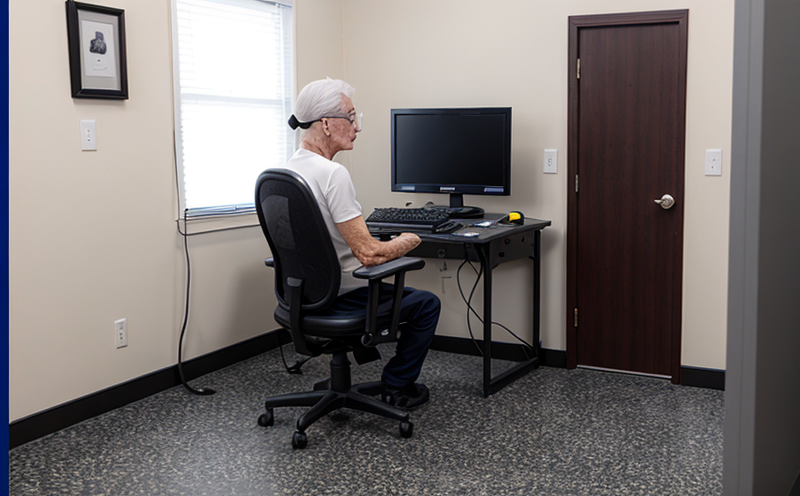EN ISO 105-X12 Colour transfer by rubbing under wear simulation
The EN ISO 105-X12 standard is designed to simulate and evaluate the colour transfer of textile materials during normal wear conditions. This test method focuses on assessing the potential for a coloured substance, such as ink or dye, from one fabric to another when rubbed together by human skin contact. It provides valuable information that helps manufacturers ensure product quality, compliance with regulatory requirements, and consumer safety.
Textile products are subjected to various rubbing conditions using standardized instruments in this test. The goal is to accurately reflect the real-world scenario where a person might come into contact with different fabrics during everyday activities. This service ensures that textile materials retain their intended appearance and performance over time, which is critical for maintaining brand reputation and customer satisfaction.
The simulation of rubbing under controlled conditions allows laboratories to identify potential issues early in the development process. By detecting any unwanted colour transfer before product release, manufacturers can make necessary adjustments to formulations or processes. This proactive approach enhances the overall quality and reliability of textile products, thereby improving market competitiveness.
Compliance with international standards like ISO 105-X12 is essential for companies operating in global markets. Adhering to these specifications helps ensure consistent product performance across different environments and cultures. The test results serve as a key factor when evaluating the suitability of new materials or processes, providing data that supports informed decision-making throughout the design and manufacturing stages.
For quality managers responsible for maintaining high standards within their organizations, this service offers an effective tool to monitor colour stability during production runs. It enables them to track any variations in colour performance throughout the supply chain, ensuring uniformity across batches. Compliance officers will appreciate how the results from this test contribute to overall regulatory compliance efforts, particularly regarding textile products intended for sale domestically or internationally.
R&D engineers can leverage the insights gained through such testing to innovate new designs that better meet consumer expectations while remaining durable and safe. Procurement departments benefit by having reliable information about supplier performance based on actual usage conditions rather than just laboratory tests conducted under ideal circumstances.
Understanding the specific requirements outlined in EN ISO 105-X12 allows for more accurate testing procedures, leading to better-informed decisions regarding material selection and process optimization. This ensures that textile products not only look appealing but also withstand rigorous use without compromising on aesthetic appeal or functionality over time.
Applied Standards
The primary standard applied in this service is EN ISO 105-X12 Color transfer by rubbing under wear simulation. This European normative document specifies the methods for determining color transfer between fabrics caused by rubbing. It provides detailed instructions on preparing specimens, setting up equipment, conducting tests, and evaluating results.
Other relevant standards include:
- ISO 105-B02: Determination of fastness to light - Part B: Xenon arc apparatus (XAD)
- ASTM D695: Standard test method for resistance to chalking and weathering by exposure to light - Part I: Exposure in artificial sunlight using xenon-arc lamps
- EN ISO 105-Y23: Determination of fastness to perspiration
These additional standards complement the main standard by covering other aspects of textile durability and performance, ensuring comprehensive evaluation.
Industry Applications
- Apparel Manufacturing: Ensures that clothing retains its vibrant colors throughout regular wear. This is particularly important for brands focusing on fashion trends or promoting active lifestyles where frequent washing could cause color fading.
- Fashion Accessories Production: Helps maintain the integrity of leather goods, belts, and other accessories exposed to prolonged skin contact during use.
- Hospital Textiles: Guarantees that medical scrubs and uniforms do not transfer harmful dyes or chemicals onto patients or equipment. This is crucial for maintaining hygienic standards in healthcare settings.
- Sports Gear Manufacturing: Ensures that performance-enhancing garments like running shoes, sports clothing, and protective gear maintain their color and durability under intense conditions such as repeated washing or outdoor exposure to sunlight.
The results from this test are used across various industries to improve product design, enhance customer satisfaction, and ensure regulatory compliance. By adhering to these rigorous testing protocols, manufacturers can create products that meet both aesthetic and functional expectations while maintaining consumer safety.
Quality and Reliability Assurance
The EN ISO 105-X12 test plays a crucial role in ensuring consistent quality across batches of textile products. By simulating the rubbing action experienced during typical wear conditions, this method helps identify potential issues early on in the production process.
- Consistency: Ensures that every batch produced meets the same high standards regarding color retention and transfer resistance.
- Durability: Evaluates how well fabrics can withstand repeated rubbing and washing without losing their original appearance or functionality.
- Safety: Helps prevent the transfer of harmful substances from textiles to skin, which is especially important in sectors like healthcare where contact with patients must be kept hygienic.
Compliance officers can use these test results to verify adherence to relevant regulations and guidelines. For quality managers, this service provides valuable data for making informed decisions about material selection and process optimization. It supports continuous improvement efforts aimed at enhancing product performance while maintaining cost-effectiveness.
The test also assists R&D engineers in developing new materials that better meet customer demands regarding colorfastness and durability. By incorporating feedback from rigorous testing, they can create innovative designs that stand the test of time without sacrificing on look or feel.





